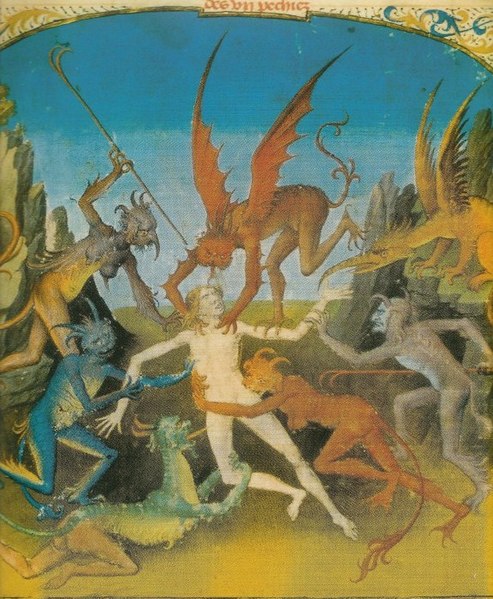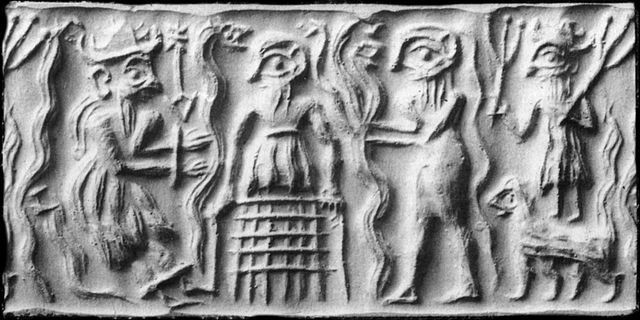There have been various attempts at the classification of demons within the contexts of classical mythology, demonology, occultism, and Renaissance magic. These classifications may be for purposes of traditional medicine, exorcisms, ceremonial magic, witch-hunts, lessons in morality, folklore, religious ritual, or combinations thereof. Classifications might be according to astrological connections, elemental forms, noble titles, or parallels to the angelic hierarchy; or by association with particular sins, diseases, and other calamities; or by what angel or saint opposes them.
The Temptation of St. Anthony by Martin Schongauer; Anthony is depicted being attacked by demons
Man being attacked by the 7 deadly devils
Demonology is the study of demons within religious belief and myth. Depending on context, it can refer to studies within theology, religious doctrine, or occultism. In many faiths, it concerns the study of a hierarchy of demons. Demons may be nonhuman, separable souls, or discarnate spirits which have never inhabited a body. A sharp distinction is often drawn between these two classes, notably by the Melanesians, several African groups, and others. The Islamic jinn, for example, are not reducible to modified human souls. At the same time these classes are frequently conceived as producing identical results, e.g. diseases.
"Nightmare", 1800, by Nikolaj Abraham Abildgaard.
Ancient Sumerian cylinder seal impression showing the god Dumuzid being tortured in the underworld by galla demons
The Torment of Saint Anthony (1488) by Michelangelo, depicting Saint Anthony being assailed by demons
Man being attacked by the 7 deadly devils





